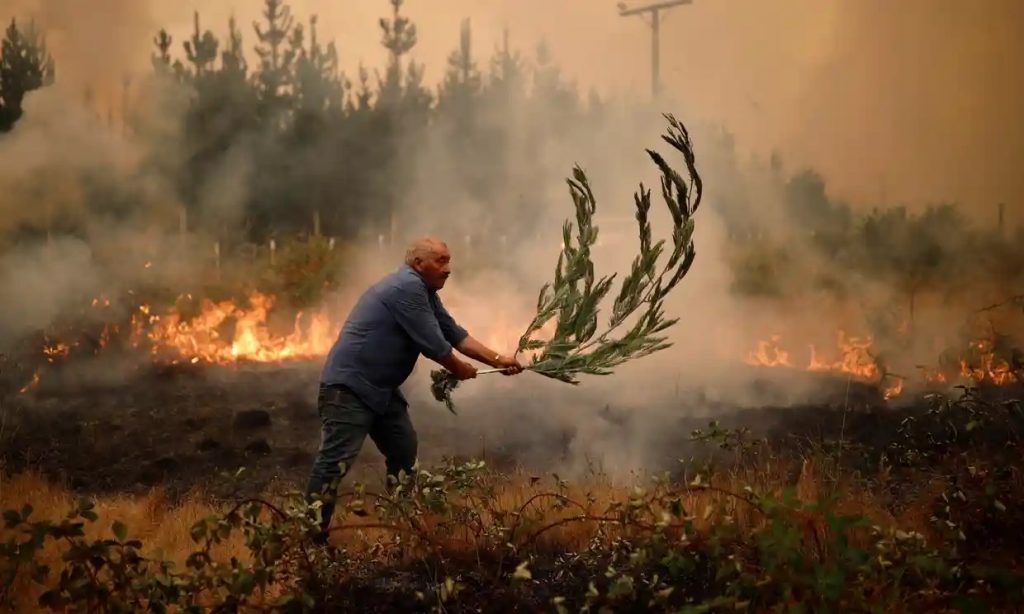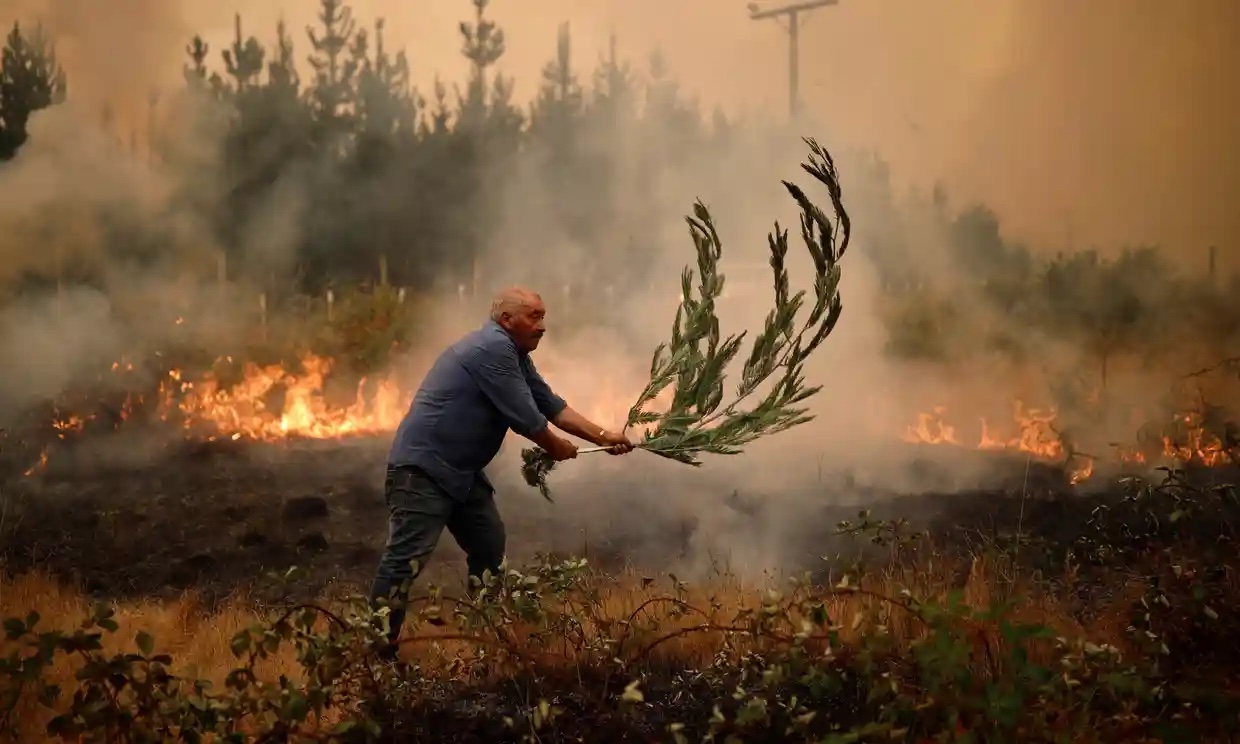
Summary
Chile has been struck by dozens of wildfires throughout their summer, which has caused three of their central regions, Bíobío, Ñuble and Araucanía to declare a state of emergency. These fires in the central region have been exceedingly difficult to deal with as local temperatures reach a 40 celsius, or 104 fahrenheit. Over 200 fires are still active, while only about 150 have been deemed ‘under control’. As of Sunday, the fires had killed 23 people, and wounded dozens of others. The main areas affected by the burns are farmland that grow crops for export, and over a thousand people have been displaced, with about 40,000 hectares burned.
Telesur Analysis
Telesur emphasized the Chilean response to the wildfires, mostly quoting the Chilean Minister of the Interior, Carolina Tohá on how the fires have been spreading and to move towards prevention. The photos also feel far more grounded in local reality, as Telesur uses local Twitter photos to show the extent of the blaze. The end of the article also explains how the fires have damaged local infrastructure, from “15 educational establishments and two health centers”, which has necessitated their military to deploy nearly two thousand troops, as well as aircraft and vehicles to mitigate the fire. Self reliance in a Chilean response, along with calls for responsibility are the highlights of the Minister of the Interior.
The Guardian analysis
Sam Jones of the Guardian includes much of the same data, though the numbers on the acreage burned along with the precise number of fires is slightly different. Jones also emphasized the intensity of the blaze as many “who have been caught up in the wildfires have had no choice but to flee”, along with details that The author also explained a dimension of foreign aid, as “Spain, the US, Argentina, Ecuador, Brazil and Venezuela had offered help, including planes and firefighters”. In addition, Jones mentions Argentina as an ally in sending “64 firefighters, a forest fire pump truck and a Chinook helicopter”. The Guardian emphasizes the aspect of foreign aid, as well as that most of the land being burned was “home to many grape, apple and berry farms”.
How the Articles differ
The information in both articles is more or less the same. Both articles emphasize the size and intensity of the fires, along with the Minister of the Interior’s comments. However, they chose two different lenses at which to look at the fires. Telesur emphasized the loss of Chilean infrastructure along with the death toll, and how the Chilean government and military had geared a response to it. On the other hand, The Guardian article focused on how the land burning was also used for crops, and the inclusion of foreign aid, with little mention of the Chilean response. The Guardian also brought up how the Minister of the Interior highlighted that this was the cause of climate change.
Class themes
The difference in the tone of the articles is similar to the Travelogs as Western/British media describe the loss of resources that could be extracted, and follows in the same exploitative vein. Additionally, the combination of the articles continues the theme of Western powers looking down upon Latin American countries, and in the Guardian article, painting them as helpless and not active agents in their own crises.
